It’s a well-known fact that staring at the sun is… not the best idea. In the same way that the sun can burn your skin, our home star can overwhelm your peepers with UV rays and literally scorch your retina.
That is a huge bummer, especially because watching a solar eclipse (when the moon covers the sun) is an incredibly cool experience. Thankfully, there are several ways to watch an eclipse without risking your vision, and one of them is building a pinhole camera out of a box, a piece of aluminum foil, and lots of tape. This is an easy and incredibly versatile project, and you can turn it into a permanent camera obscura when you’re done watching the eclipse.
Stats
Time: 10 minutes
Cost: $1
Difficulty: easy
Materials
1 cardboard box
Duct tape (or electrical tape)
Aluminum foil
White paper
Scissors (or box cutter)
Ruler
Pencil
Thumbtack
(Optional) glue
How to make a pinhole camera
1. Light-proof your box. Leaving one side open, use duct tape or electrical tape to seal the box and prevent any light rays from sneaking in. Pay special attention to the corners and wherever two pieces of cardboard meet. The pinhole will only allow a few rays of light into your box, so the projection of the sun will be dim. That means the darker your camera, the easier it will be to see the image.
As we said, this project is versatile. You can use a wide range of box sizes to make your pinhole camera, but cereal and shoe boxes work exceptionally well. We used the 15-by7 ½-by-5 ½-inch box that carried our neighbor’s latest online shopping spurt.
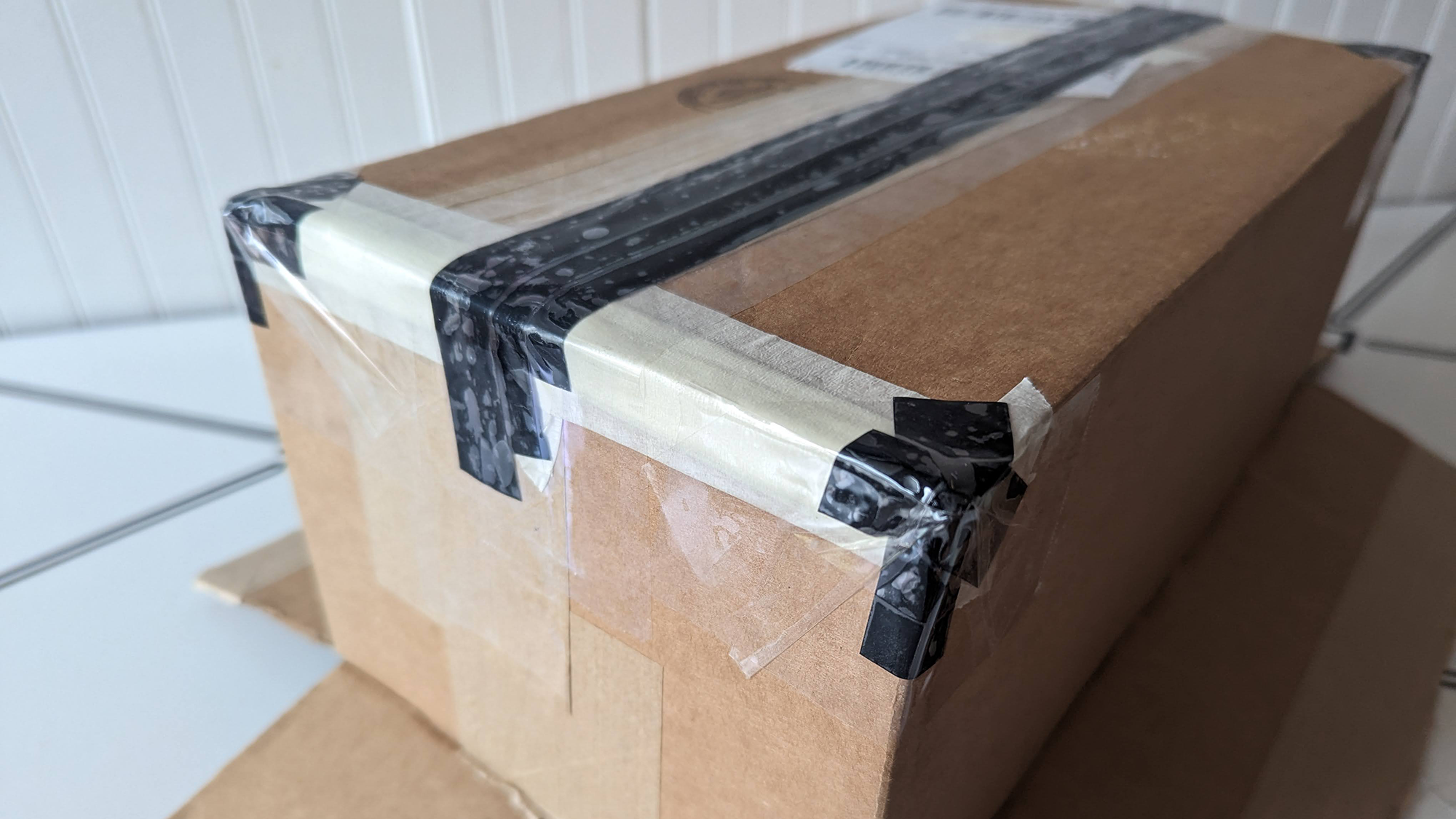 Covering the openings and corners with duct tape is the easiest way to light-proof your box. But electrical tape will also do. Sandra Gutierrez
Covering the openings and corners with duct tape is the easiest way to light-proof your box. But electrical tape will also do. Sandra Gutierrez
Likewise, duct tape and electrical tape are the best choices to light-proof your box, but you can use any tape that will block light—dark washi tape or masking tape will also do the trick. Just keep in mind that you may have to apply multiple layers to achieve total darkness inside your box.
[Related: A ‘ring of fire’ eclipse and Hunter’s Moon will bring lunar drama to October’s skies]
Pro tip: Check your work by holding your box up to a light and looking inside. If you still see some shine coming through, apply another layer of tape.
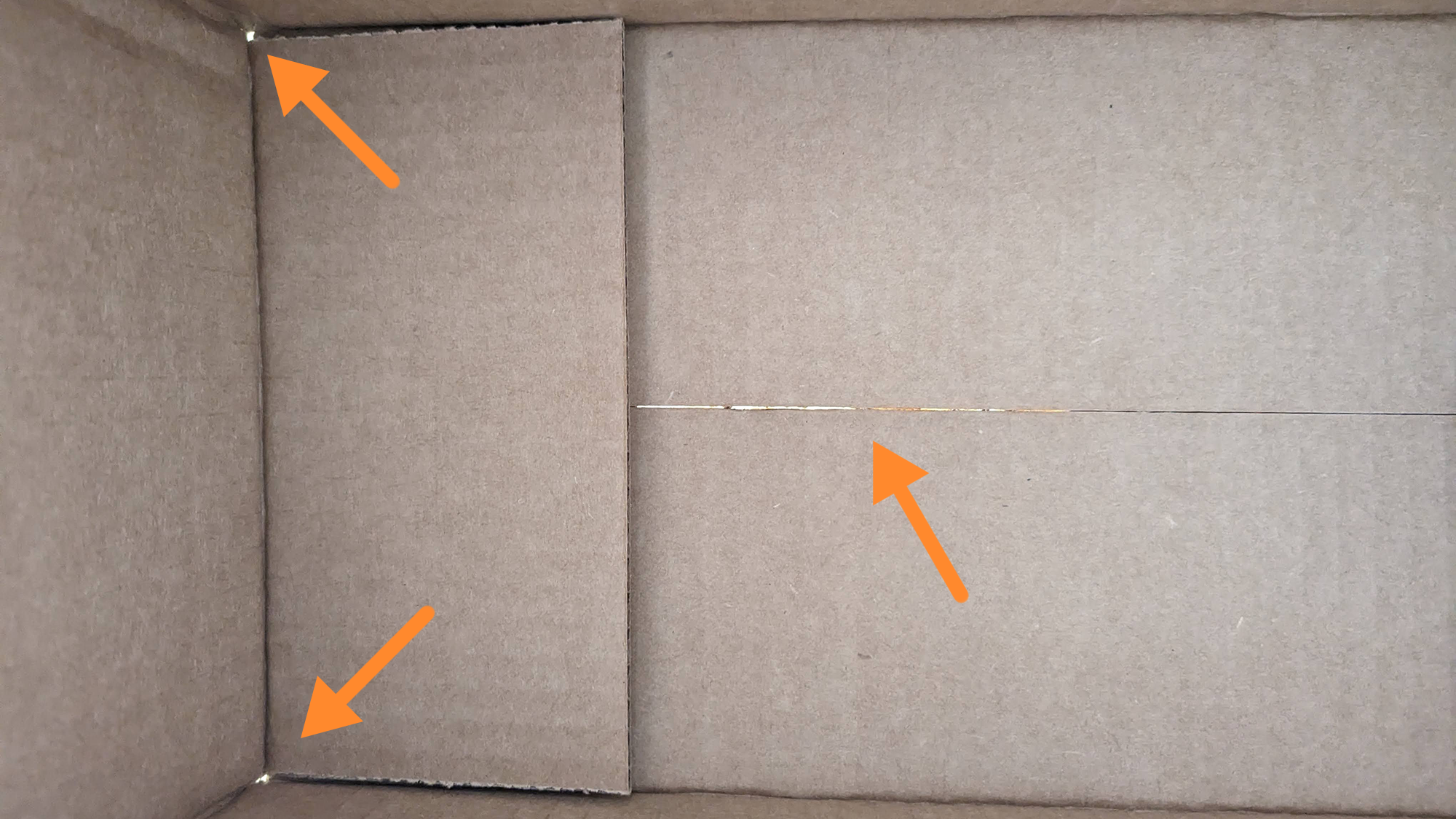 Hold your box against a window or a lamp to see where the light comes through. The corners are often problematic spots you’ll need to cover. Sandra Gutierrez
Hold your box against a window or a lamp to see where the light comes through. The corners are often problematic spots you’ll need to cover. Sandra Gutierrez
2. Determine your pinhole’s location and cover the inside of the opposite face with white paper. Measure one of the smallest sides of the box, cut a piece of white paper to the same size, and tape or glue it to the inside of the corresponding face. It doesn’t have to be perfect—as long as most of the side is covered, you’ll be good to go. Just make sure that the paper doesn’t have any wrinkles or folds, as they may distort the image of the sun.
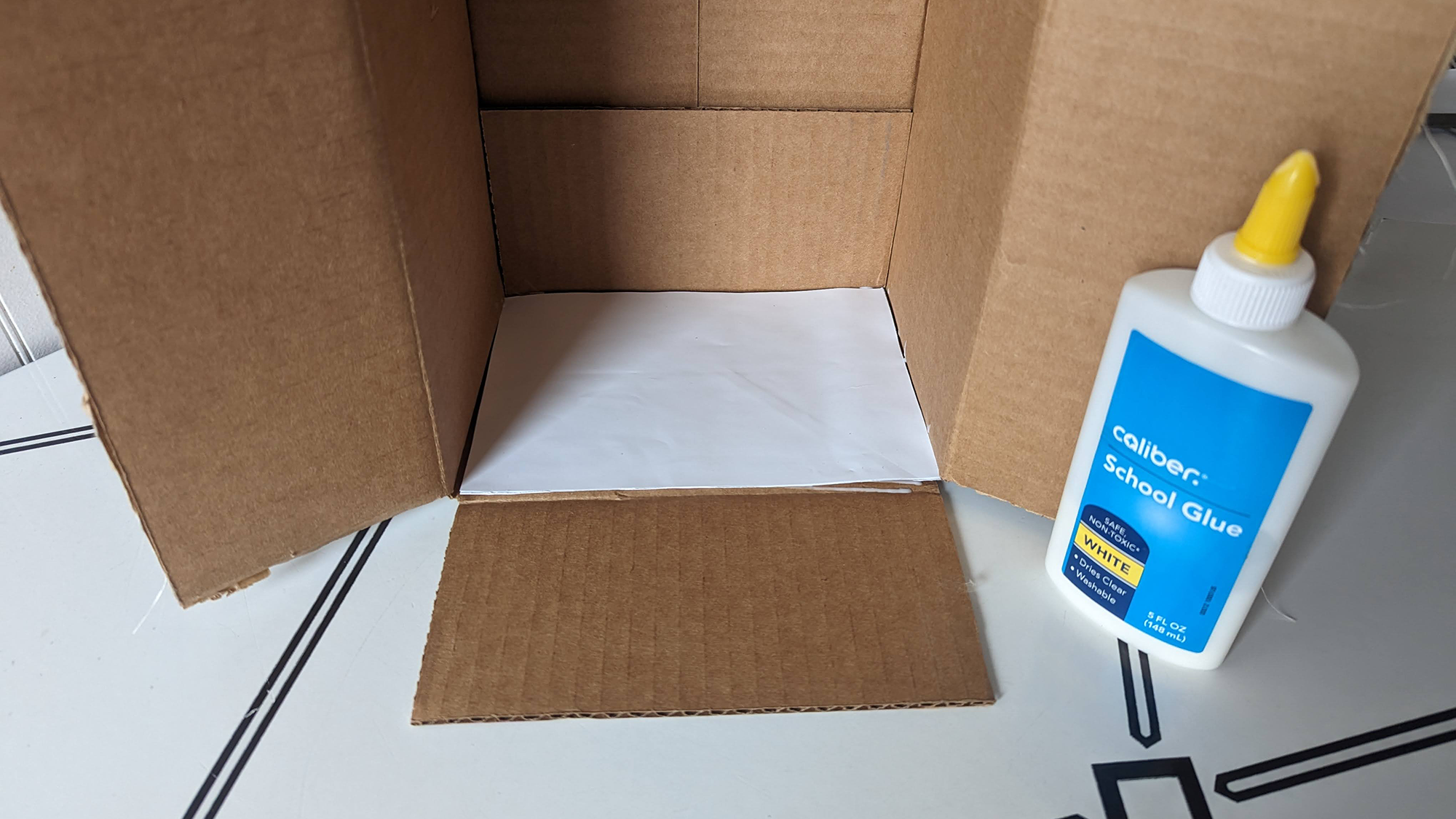 If you don’t want to mess around with glue, you can always just tape the white paper that will be your screen. Do it carefully to avoid wrinkles and creases. Sandra Gutierrez
If you don’t want to mess around with glue, you can always just tape the white paper that will be your screen. Do it carefully to avoid wrinkles and creases. Sandra Gutierrez
3. Measure the openings for the pinhole and the viewer. On the side opposite the one you covered with white paper, use your ruler and a pencil to measure two openings. The pinhole opening will be located in the upper left corner (about half an inch from the edges) and will be 2-by-2 inches (we’ll make it smaller later).
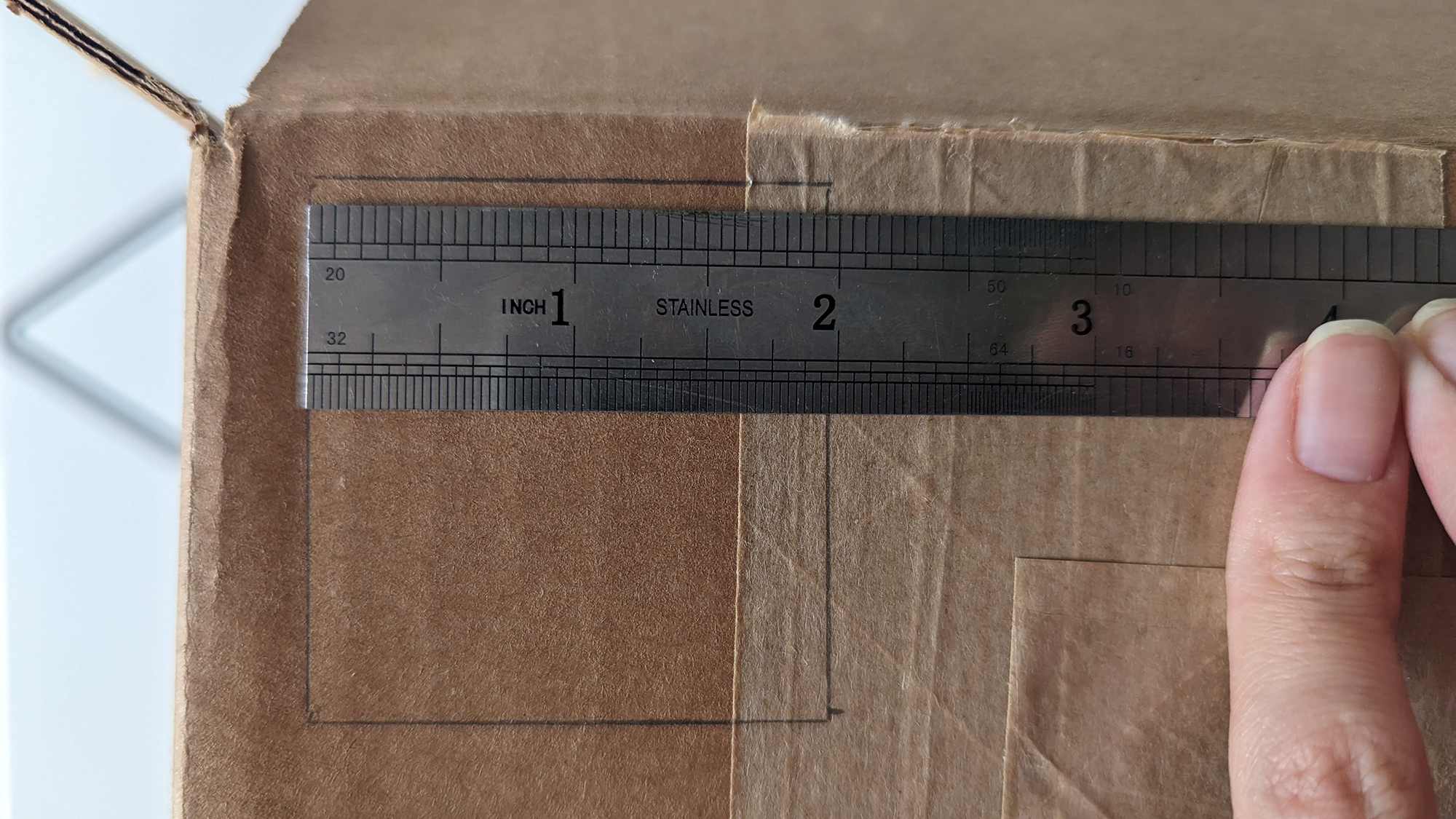 Measurements don’t have to be exact. As long as the aluminum foil covers the entire opening, you’ll be fine. Sandra Gutierrez
Measurements don’t have to be exact. As long as the aluminum foil covers the entire opening, you’ll be fine. Sandra Gutierrez
The viewing opening will be located in the upper right corner of the box, half an inch from the top edge and an inch from the right edge of the box. This opening will be smaller—only 1 inch square.
4. Cut the openings. Using a box cutter or scissors, cut out the openings you drew.
Pro tip: If the openings end up being too big, don’t sweat it—you can always adjust their size with tape.
5. Close and seal the box. Use your newly cut openings to make sure there are no other places where light might be sneaking in. Pay special attention to the corners of the box above and below your openings. Cover all the places where pieces of cardboard meet with tape.
6. Cover the larger opening with aluminum foil. Cut a smooth 2 ½-by-2 ½-inch piece of aluminum foil. With the dull side facing you, carefully cover the big opening with the metallic sheet and tape it in place. Make sure you secure it tightly so no light can get into the box.
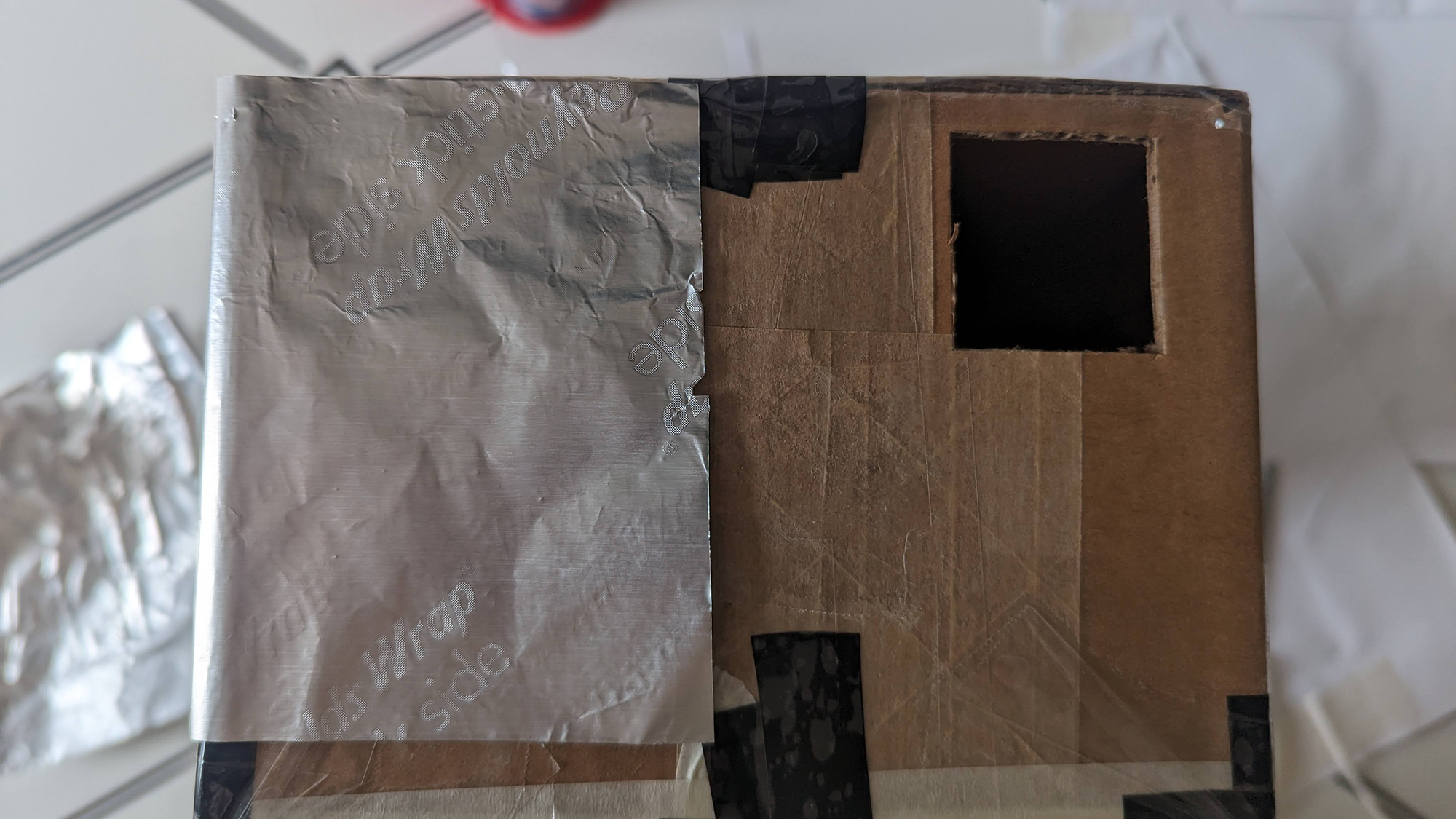 Having a smooth piece of aluminum foil will prevent sunlight from being redirected. Sandra Gutierrez
Having a smooth piece of aluminum foil will prevent sunlight from being redirected. Sandra Gutierrez
Pro tip: To smooth out any creases, softly rub the top of any fingernail over the foil in a small, circular motion.
7. Use the thumbtack to poke a hole in the foil. Find the rough center of the 2-by-2-inch square under the aluminum sheet and gently push the tack through before pulling it back out—you want a clean, round hole. If you don’t have a thumbtack, you can use the tip of a toothpick or an embroidery needle. Just make sure that whatever you’re using has a point (it’ll make a neater hole) and that it’s approximately 0.2 millimeters wide.
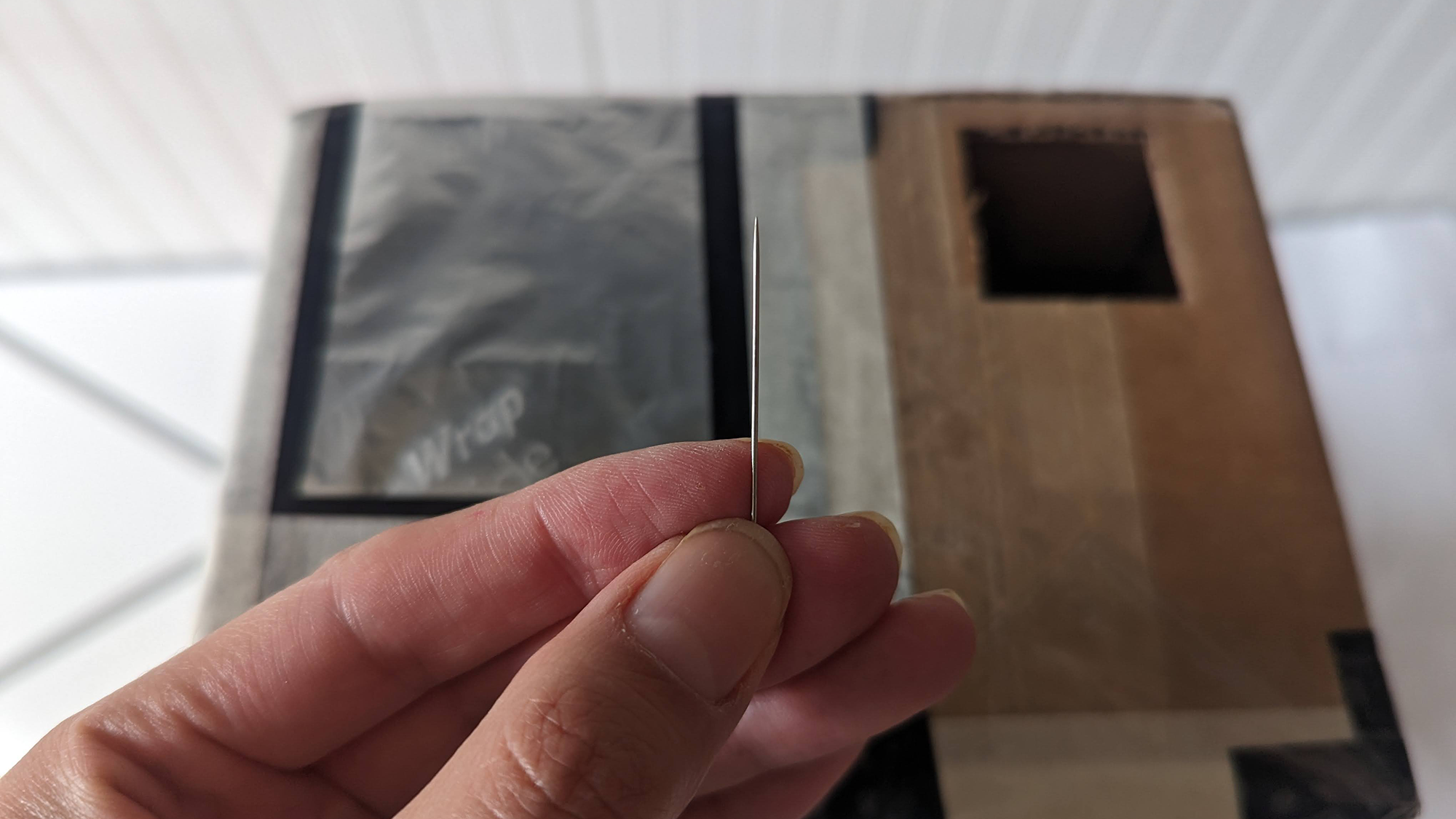 We used an embroidery needle to poke our pinhole. If you find that what you used is too wide, you can just replace the piece of aluminum foil and start again. Sandra Gutierrez
We used an embroidery needle to poke our pinhole. If you find that what you used is too wide, you can just replace the piece of aluminum foil and start again. Sandra Gutierrez
Note: The width of your pinhole will determine how much light gets into the box. Too much light and the image will be blurry. If that’s the case, don’t worry—just replace the foil and try making a smaller pinhole.
8. Put your pinhole camera to the test. Stand with your back facing the sun and look into the box through the viewport. Use your hands to block out as much light as possible and move around until you find the angle where sunlight enters through the pinhole. When this happens, you should see a small projection of the shape of the sun on the white paper you pasted inside the box.
[Related: Total eclipses aren’t that rare—and you’ve probably missed a bunch of them]
Keep in mind that the weather is crucial in determining the quality of the image you’ll see inside your pinhole camera, and whether you can see the eclipse at all. The October 14 eclipse, in particular, will be annular, so the moon will be smaller than the sun and clouds, rain, or other inclement weather will make it hard to see the event, explains Franck Marchis, a SETI Institute astronomer and the chief scientific officer of Unistellar, a company that manufactures smart telescopes.
How a pinhole camera works
Images are light. Everything we see we perceive because there’s light bouncing off of it, beaming directly through our pupils and into our eyes. All cameras, including the humble pinhole camera you just made, operate under this basic principle. The better they filter the light, the sharper the resulting image will be.
The sun, of course, is the ultimate light source. On a sunny day, rays from the star travel to Earth and bounce off of every surface they reach. This is a lot of light coming from all directions, so if we want to see only a small portion of the sun’s rays, we have to focus those rays and filter out the rest. That’s why the pinhole in your camera is so tiny or, in more technical terms, why its aperture is so narrow—it only lets a small amount of light into the box, just enough so you can see only a dim projection of the sun when you point the pinhole directly at it.
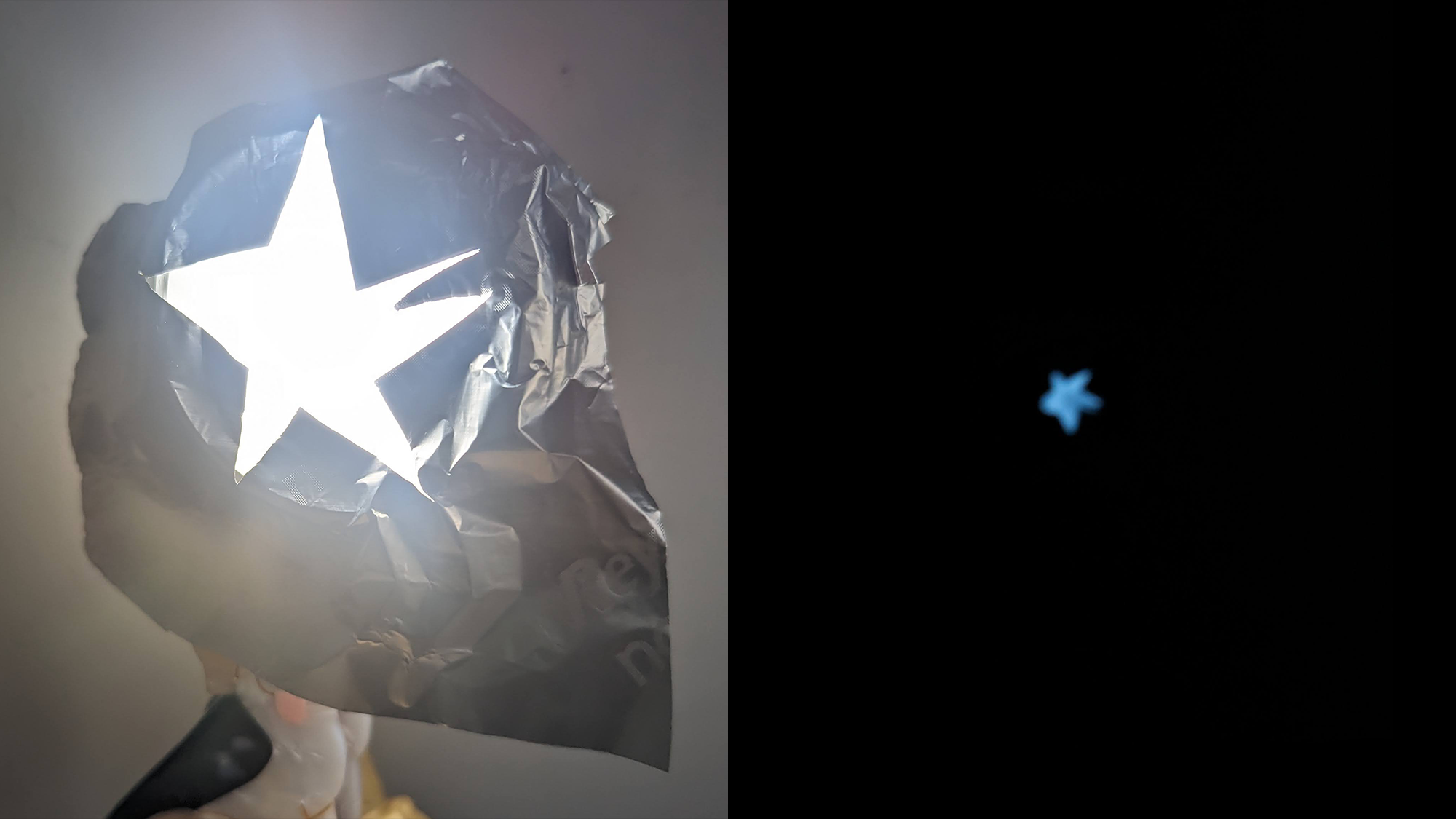 I built my pinhole camera on a cloudy day, so I tested it with my LED lamp and added a very non-professionally made filter I made with aluminum foil to test the sharpness of the image. Sandra Gutierrez
I built my pinhole camera on a cloudy day, so I tested it with my LED lamp and added a very non-professionally made filter I made with aluminum foil to test the sharpness of the image. Sandra Gutierrez
The dimness of the image is not ideal, but it’s the tradeoff we make for sharpness—too much light results in a blurry, out-of-focus picture. This is important during a solar eclipse, as filtering the light will allow you to see the round shape of the sun become a crescent or a ring as the moon moves in and gradually blocks the sunlight.
When the eclipse is over, use a skewer to widen your camera’s pinhole. When you look inside, you won’t only be able to see the sun, but a slightly brighter and inverted image of your surroundings. A bigger pinhole turns your box into a camera obscura, allowing more light in and projecting an image of the objects around you.
>>> Read full article>>>
Copyright for syndicated content belongs to the linked Source : Popular Science – https://www.popsci.com/diy/how-to-make-a-pinhole-camera/































